Six Minute Walk Test
The Six Minute Walk test assesses functional capacity in individuals with chronic respiratory disease and heart failure and has become a standard measure in a variety of adult and pediatric health and chronic diseased populations. The test involves walking as far as possible within six minutes, with a lower distance being strongly associated with increased risk of hospitalization and mortality.
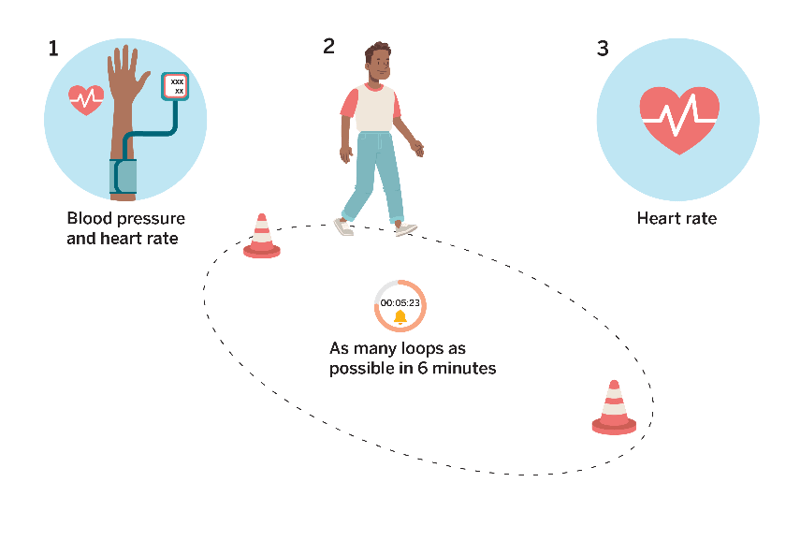
Balance Test
The test times how long (with a maximum time of 10 seconds) participants can stand in each of the following positions: 1) feet together and side-by-side; 2) heel of one foot adjacent and touching the big toe of the other foot (semi-tandem stance); 3) heel of one foot in front of and touching the toes of the other foot (tandem stance), and; 4) standing on leg. At all times the tester is to the side of the subject with the arms positioned to support the subject should they need assistance.
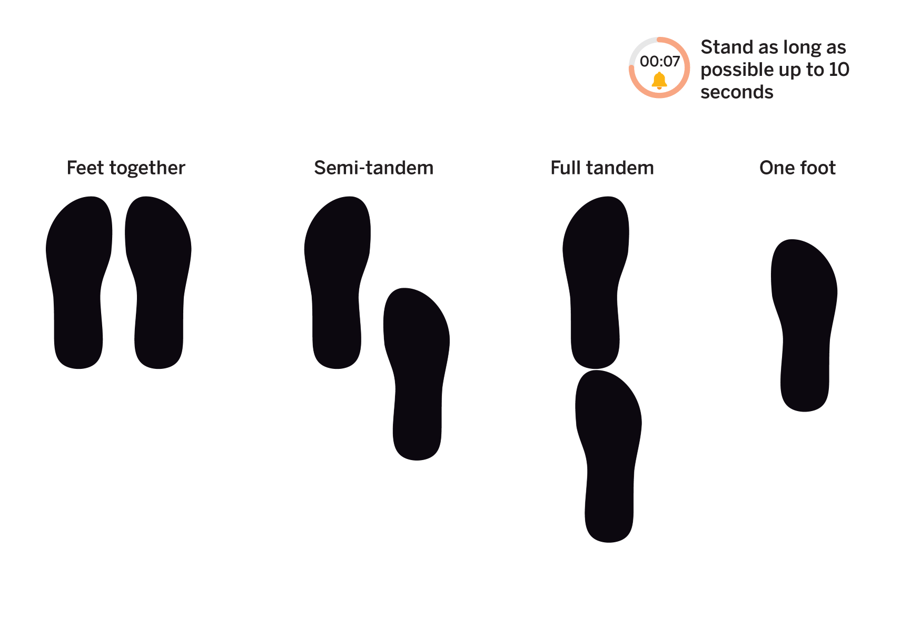
Gait Speed
Usual gait or walking speed is the sixth proposed vital sign. Although predominantly established in the geriatric literature as a generic indicator of health status and prognosis, gait speed summarized the overall burden of disease and has utility across ages and disease states.
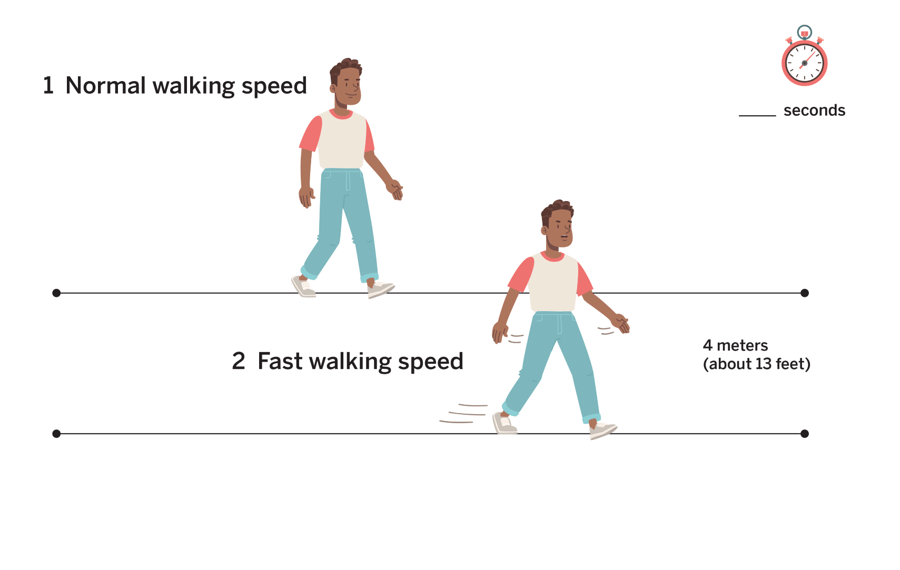
Grip Strength
Grip strength provides an indication of overall strength and muscle mass and is relevant across a range of scenarios as a simple, clinically implementable measure of strength.
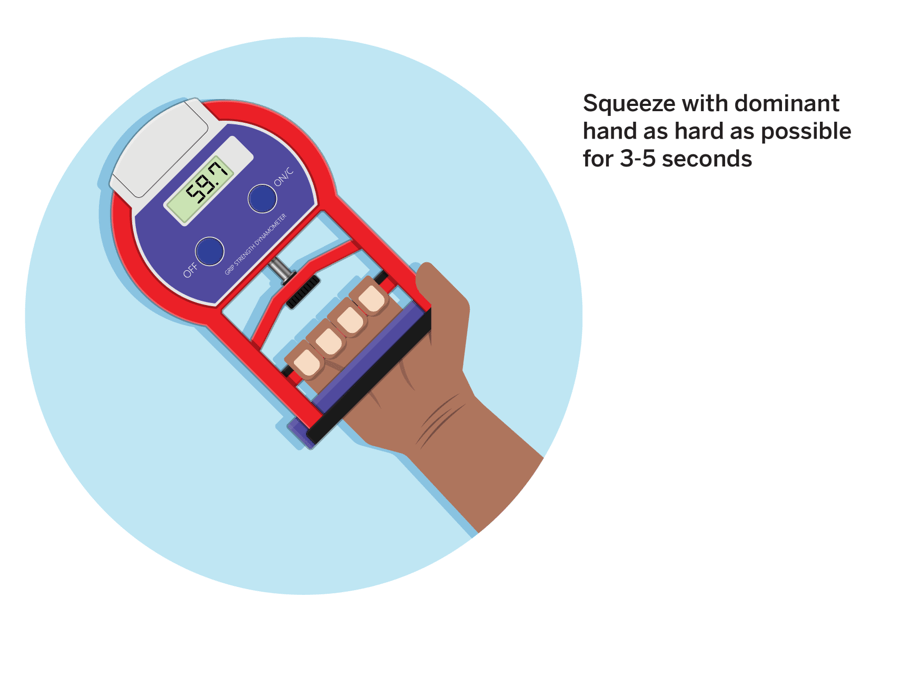
Repeated Sit-to-Stand
The Repeated Sit-to-Stand is a practical and reliable means of measuring coordination, balance, and lower extremity strength and power. Investigators at IU School of Medicine use the five timed sit-to-stand test. Prospective studies have shown performance on the five timed sit-to-stand test to be predictive of falls, with those who needed more than 15 seconds to complete the test having twice as many falls than those who take less time.
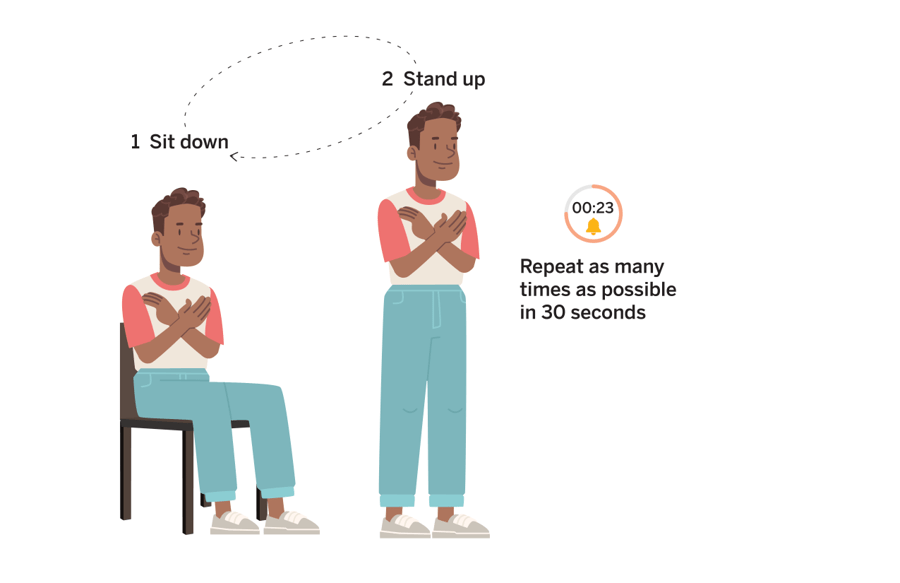
Timed Up-and-Go
The Timed Up-and-Go test measures, in seconds, the time taken by an individual to stand up from a standard chair, walk a distance of 3 meters (approximately 10 feet), turn, walk back to the chair, and sit down. Faster times are associated with greater leg strength and power.
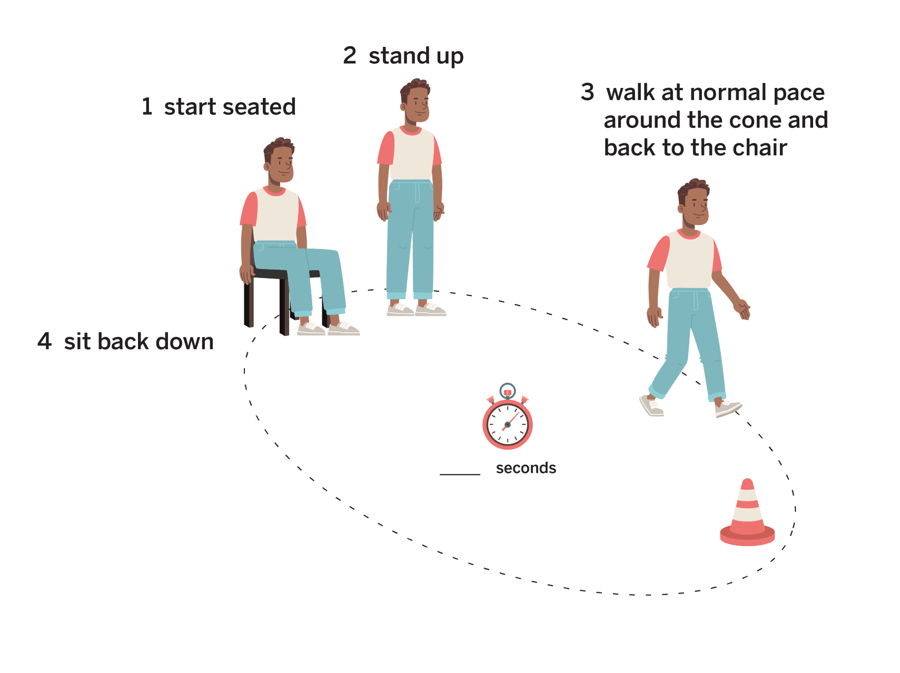
Physical Function Data Entries
As of October 21, 2024
| Usual Gait Speed | 5,405 |
| Fast Gait Speed | 5,405 |
| Grip Strength | 5,406 |
| Repeat Chair Stands | 5,407 |
| Six-Minute Walk | 5,409 |
| Timed up-and-go | 1,007 |
| Standing Balance | 5,406 |
Related Publications
Gallardo EJ, Gray DA, Hoffman RL, Yates BA, Moorthi RN, Coggan AR. Dose-Response Effect of Dietary Nitrate on Muscle Contractility and Blood Pressure in Older Subjects: A Pilot Study. J Gerontol A Biol Sci Med Sci. 2021 Mar 31;76(4):591-598.
Lyssikatos, C., Wang, Z., Liu, Z. et al. L-β-aminoisobutyric acid, L-BAIBA, a marker of bone mineral density and body mass index, and D-BAIBA of physical performance and age. Sci Rep 13, 17212 (2023).
Lyssikatos, C., Wang, Z., Liu, Z. et al. γ-Aminobutyric acids (GABA) and serum GABA/AABA (G/A) ratio as potential biomarkers of physical performance and aging. Sci Rep 13, 17083 (2023).